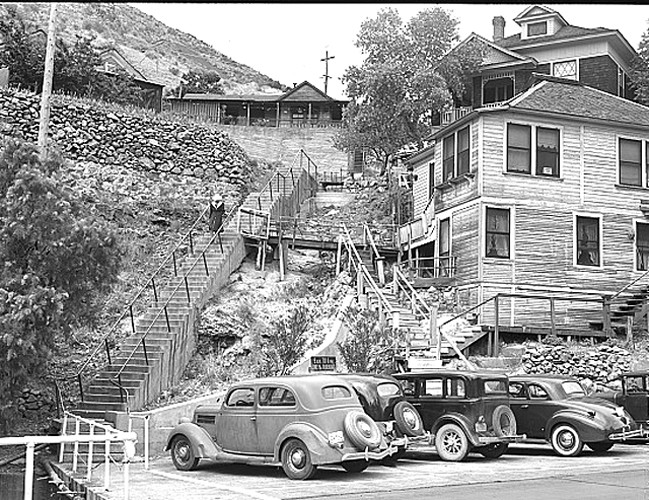 |
Explore
Bisbee--Hike the Route
of the "Bisbee 1000 Stair Climb"
 |
The "Bisbee 1000 The Great Stair Climb" is a very popular race that is run every October on the streets of Bisbee in southeastern Arizona. Nine of the concrete stairways that were constructed to provide access to the upper levels of the town have been incorporated into the route. The Bisbee 1000 course is 4.5 miles long and there are slightly more than 1000 stair steps to be climbed. On the days of the year other than race day, a walk along the route of the race is a neat way to see what the town is like away from the more touristy main street.
Although it is somewhat obscured in this current photo, the stairway in the 1940 photo above is still in use today and is one of those that are a part of the Bisbee 1000 course. Many of the stairways were constructed during the Depression years as Works Progress Administration(WPA) projects to provide employment for the men of the town.
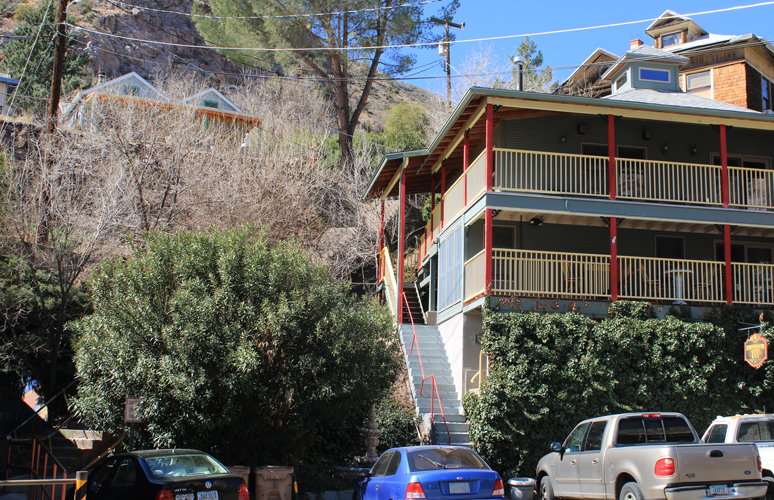 |
 |
 |
The Stair Climb route is shown in orange on this map. A copy of the map can be downloaded here. My first walk of the route took about two hours. Shorter walks can done. Street intersections along the way are well marked, so finding your location on the map is easy.
 |
The map states that Bisbee has 350 sets of stairs. The 9 staircases that are a part of the Bisbee 1000 route are public walkways and are open for all to use. Signage and artwork identify the stairways to use.
The race course was laid out so that each of the stairs is climbed from bottom to top. It is possible to walk the course in reverse, but the upper ends of the staircases are not identified. Travel in the reverse direction is a bit more challenging. The stairways vary in length from 73 to 181 steps.
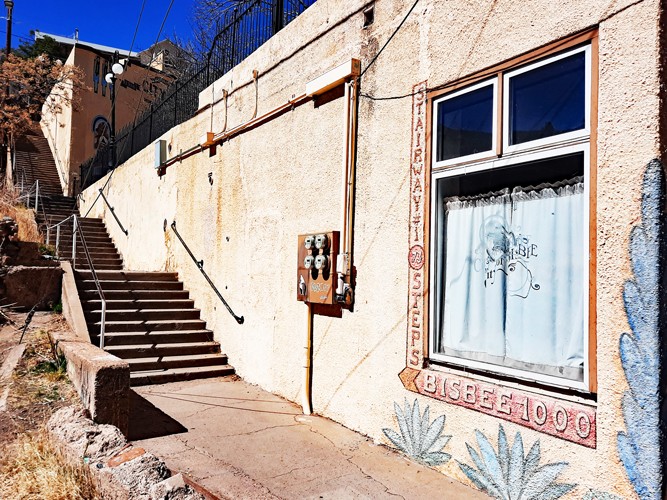 |
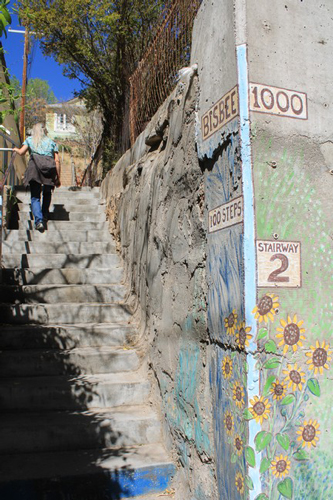 |
For the majority of the houses along the stairways, the stairs are their only access. Residents must park elsewhere. The houses can be very close to one another, and are often located just a few steps away from the stairs.
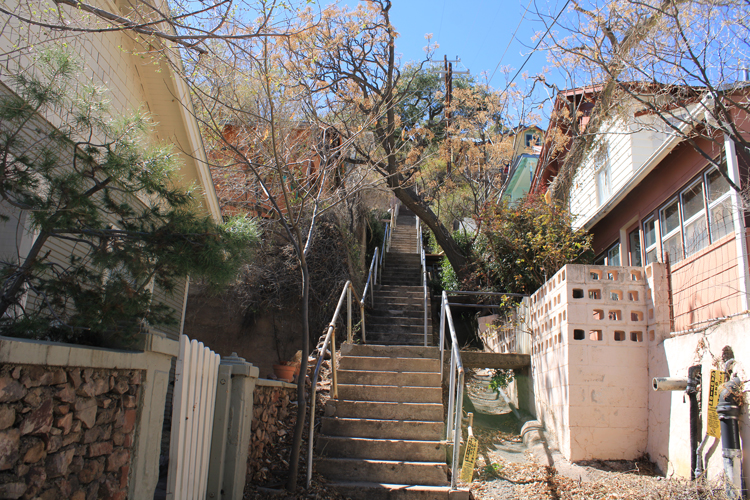 |
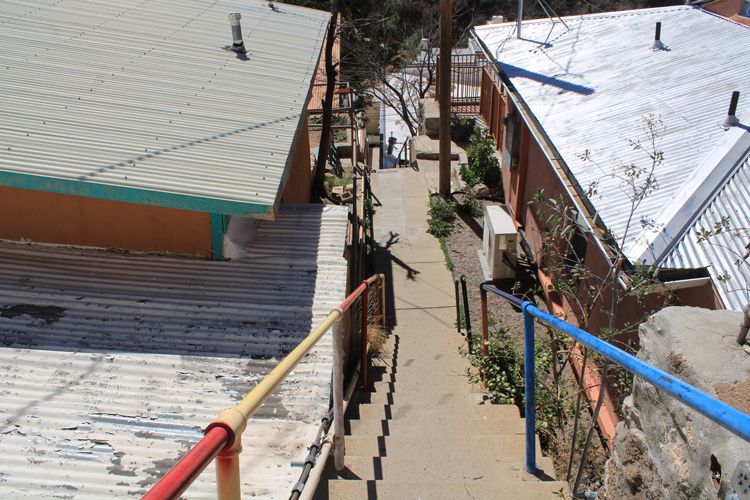 |
The race course begins at the sculpture known as the "Iron Man" statue. This art piece was created in 1935. The Miners' Monument was constructed of concrete and then sprayed with a layer of copper. The block of granite that it is mounted on was of the type that was used in drilling contests during the early days of the town.
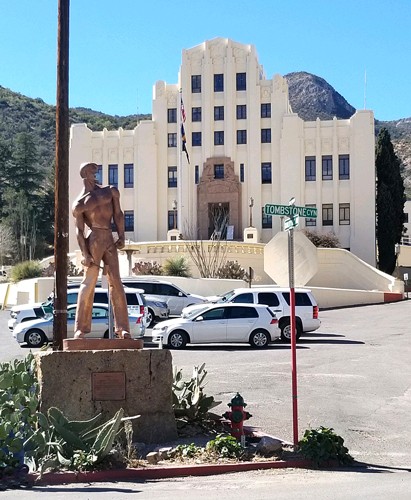 |
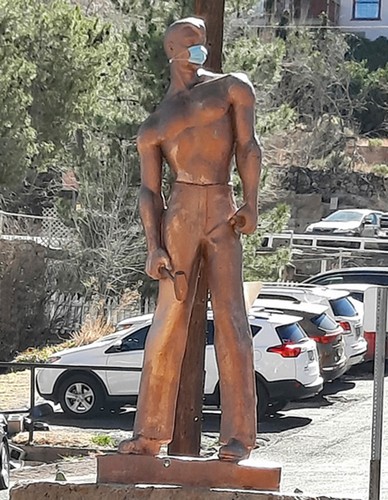 |
Other sculpture art can be found along the route of the Bisbee 1000. Two examples are the houseflies on the wall of the mining museum and a pair of fairies that are standing guard at a residential entrance.
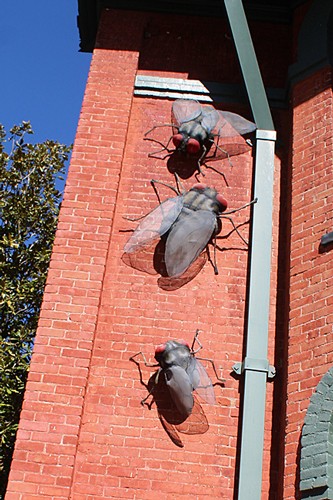 |
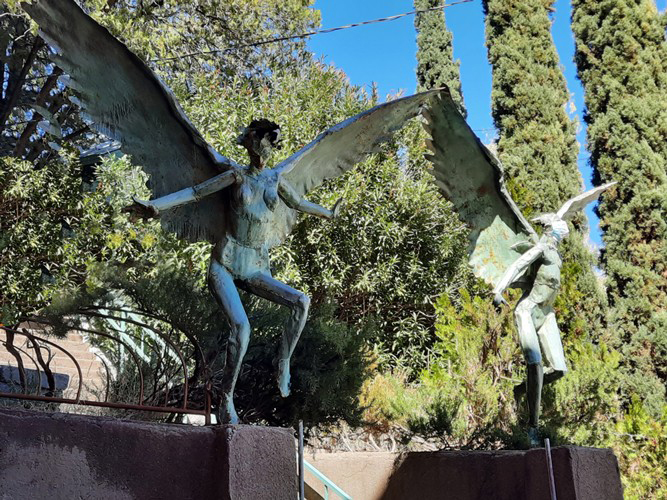 |
There are few bare walls in the town.
 |
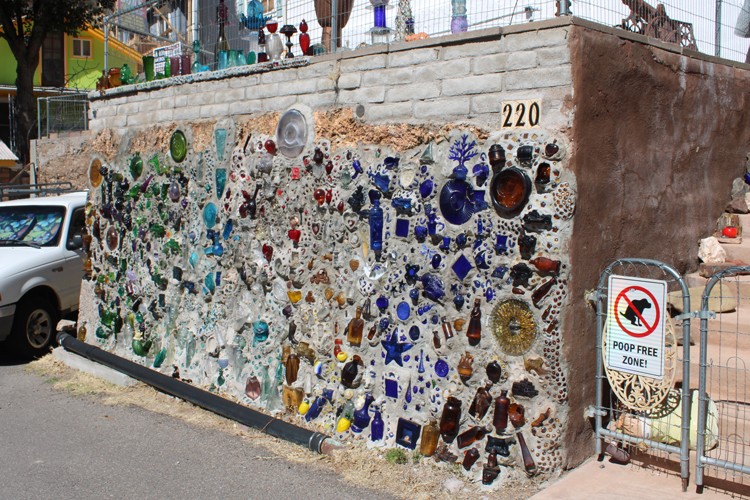 |
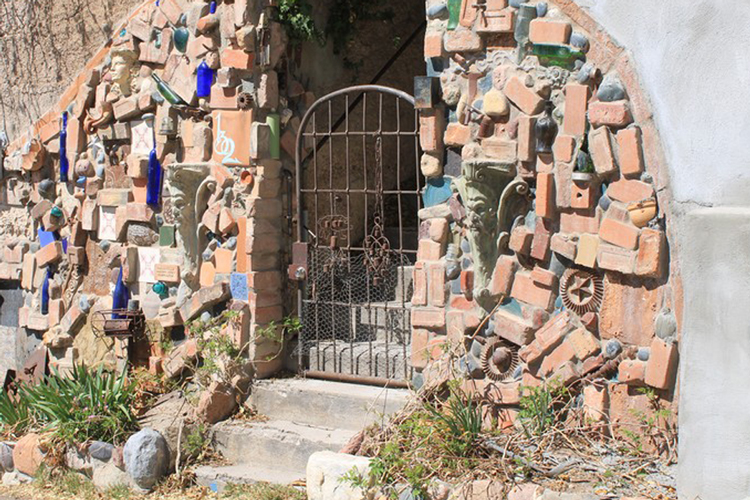 |
The old houses along the route are interesting for both their style and location. If a space on a hillside could be built on, it usually was.
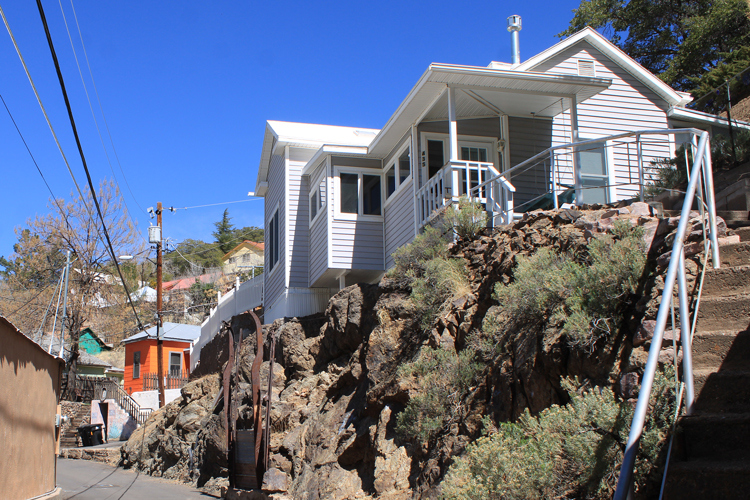 |
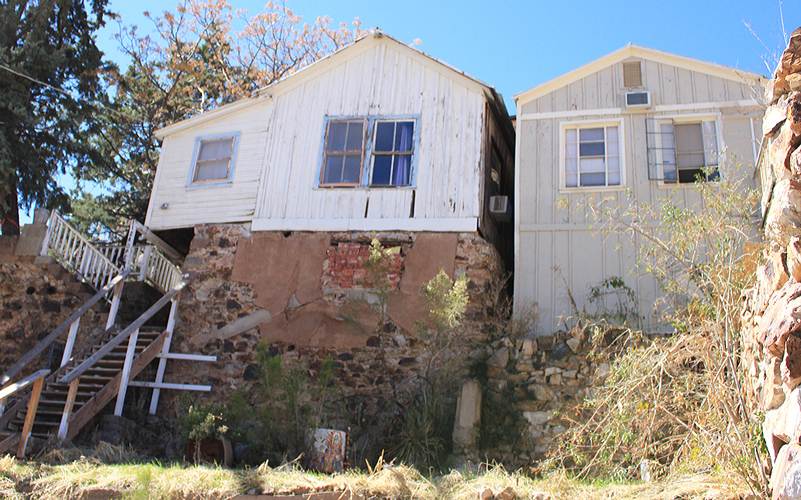 |
 |
Even the manhole covers are interesting. Not sure how the covers intended for El Paso Texas came to be installed here.
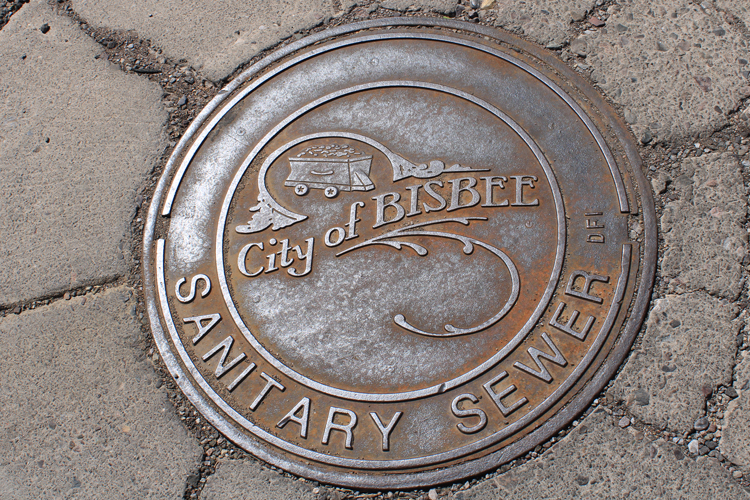 |
 |
This meter box was constructed by the Albert Steinfeld Company in Tucson. Steinfeld was best known for his department store, but he was also involved in many other business enterprises. The box was manufactured in the early 1900s.
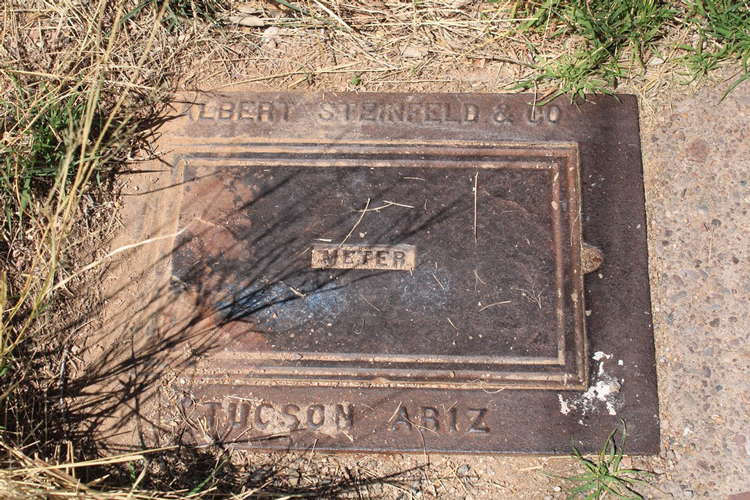 |
These sidewalk skylights were installed to allow sunlight to penetrate to a dark basement area. The glass prisms have been here on Main Street for so long that they have turned purple.
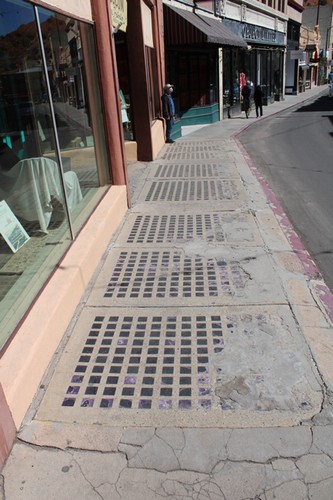 |
The many old commercial buildings are the highlight of the tour along the Bisbee 1000 route.
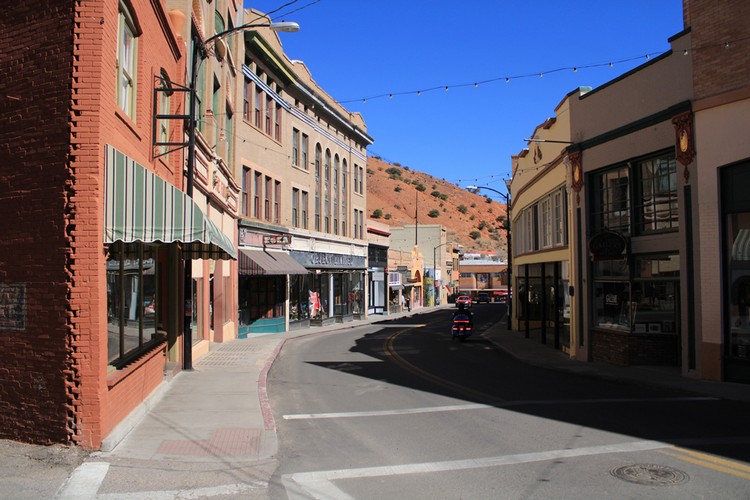 |
This building is now identified as the Convention Center. It was originally constructed in the 1930s as the Phelps Dodge Mercantile Store. When the mines ended production in the 1970s, the store was closed. Today, there are several retail shops and restaurants that occupy the space.
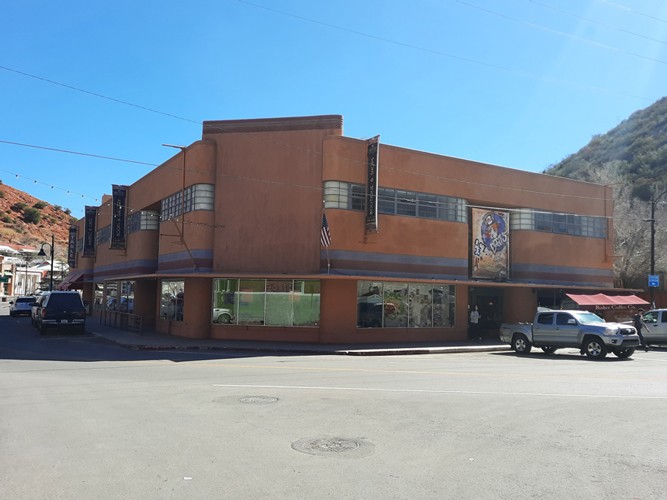 |
 |
Across the plaza from the convention center is a building that once housed the offices for the mining company. Today, a mining museum is located here.
 |
As one travels the race course through Brewery Gulch, the site of one of the old breweries is passed by.
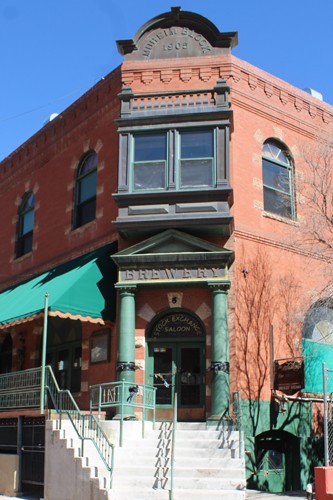 |
Saint Elmo's bar, the oldest operating tavern in the town, is in Brewery Gulch.
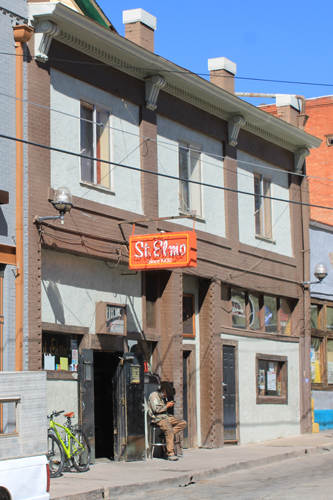 |
The old Central School, which is now an art center, and the YMCA building, are on the route beyond Stairway #2.
 |
Not very far away, and very similar in appearance to the YMCA building, is the old YWCA structure. Today, hotel style lodging can be arranged here.
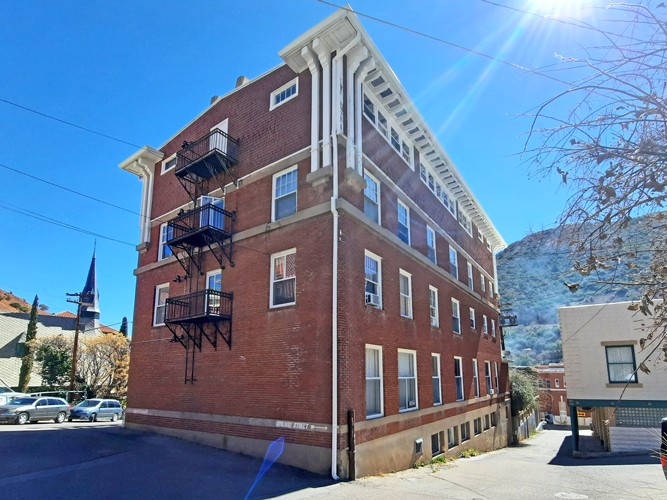 |
This is Subway Street, another one of the interesting parts of the race course route.
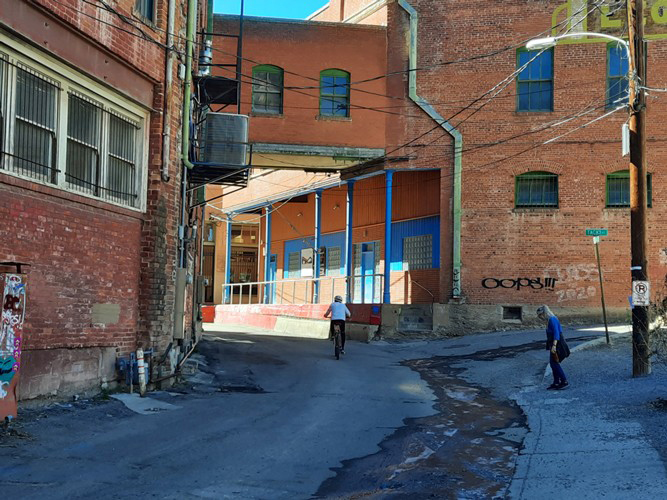 |
Beyond Stairway #3, there is the old high school building. The lot that this structure was constructed on is at such an angle, that each of the floors in the multi story building has a ground level entrance!
 |
The highest elevations of the race course are reached at the top of Stairway #5. From High Street, there are great views down onto the town.
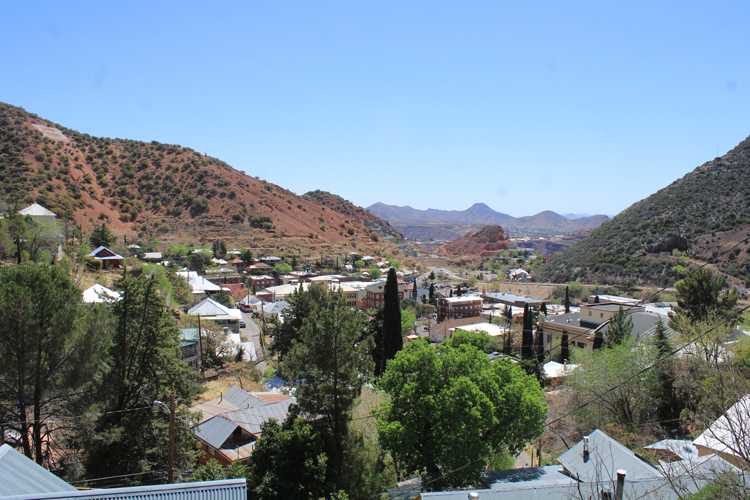 |
The Cochise County courthouse is the large building on the left and Saint Patrick's Catholic Church is on the right. A later loop in the course will pass between the two buildings.
Bisbee Fire Department Station #2 is passed by when the race course returns to upper Tombstone Canyon Road. This station was established in 1914.
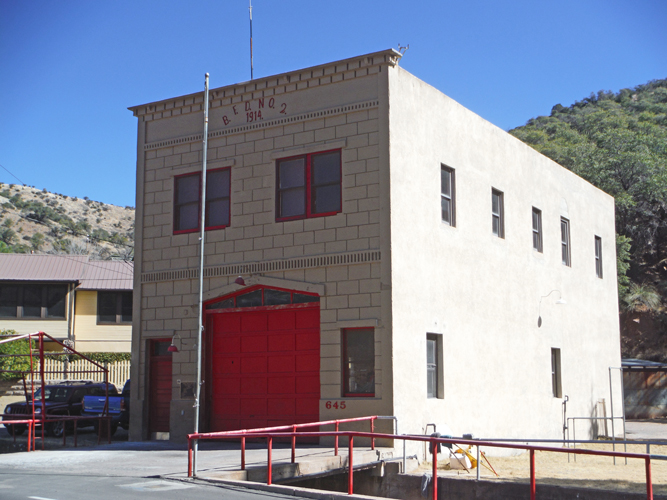 |
The Bisbee 1000 course finishes with a run through the southern hillsides of the town. The houses in this section of town are noticeably larger. This was where mine officials and business owners lived.
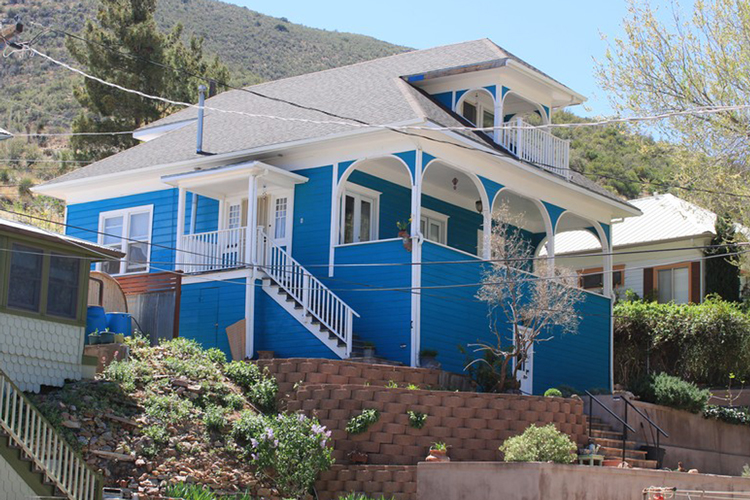 |
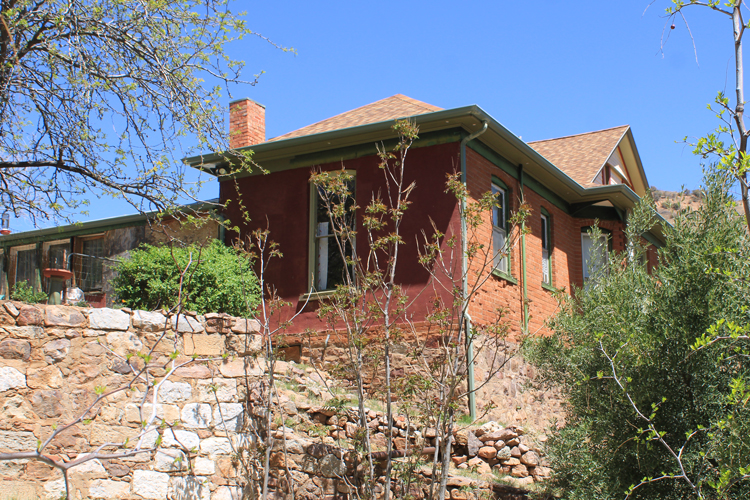 |
This county administration building was formerly a junior high school.
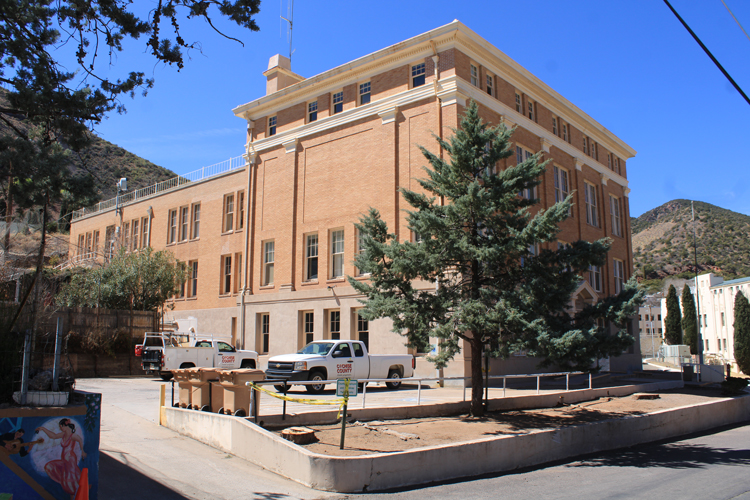 |
From the top of Stairway #9, it is all downhill to the finish line at the County Courthouse.
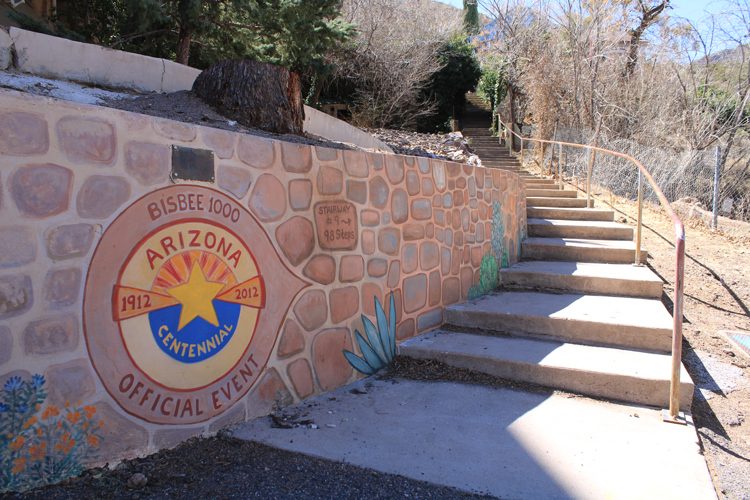 |